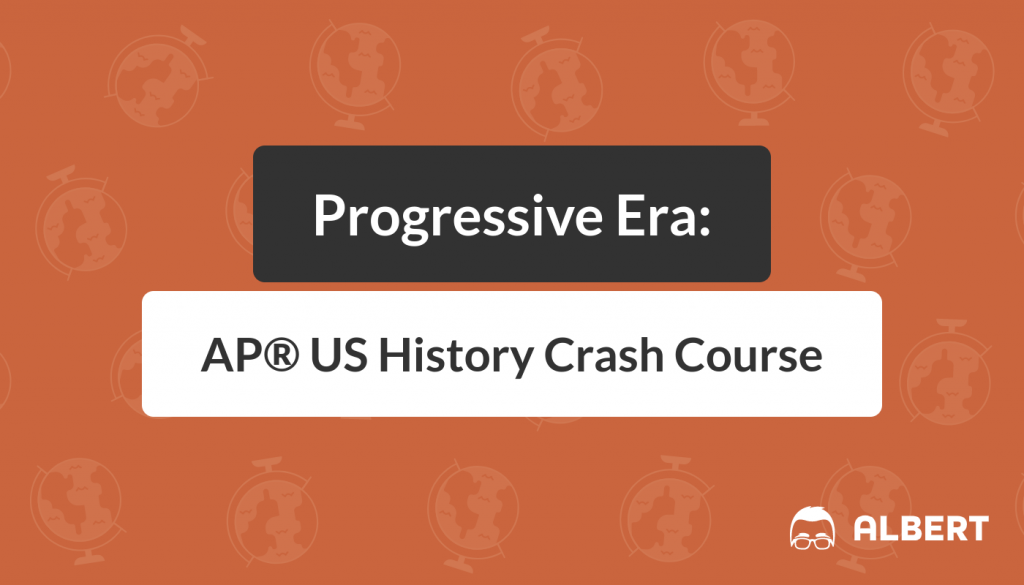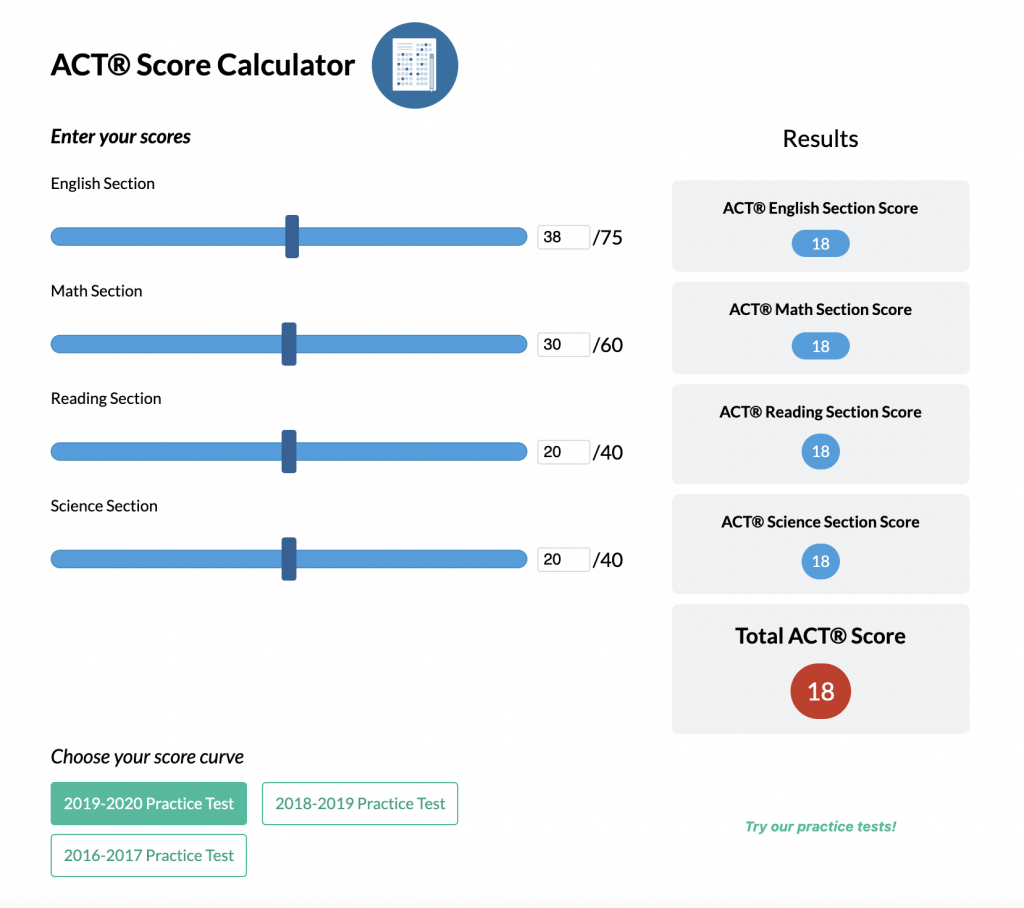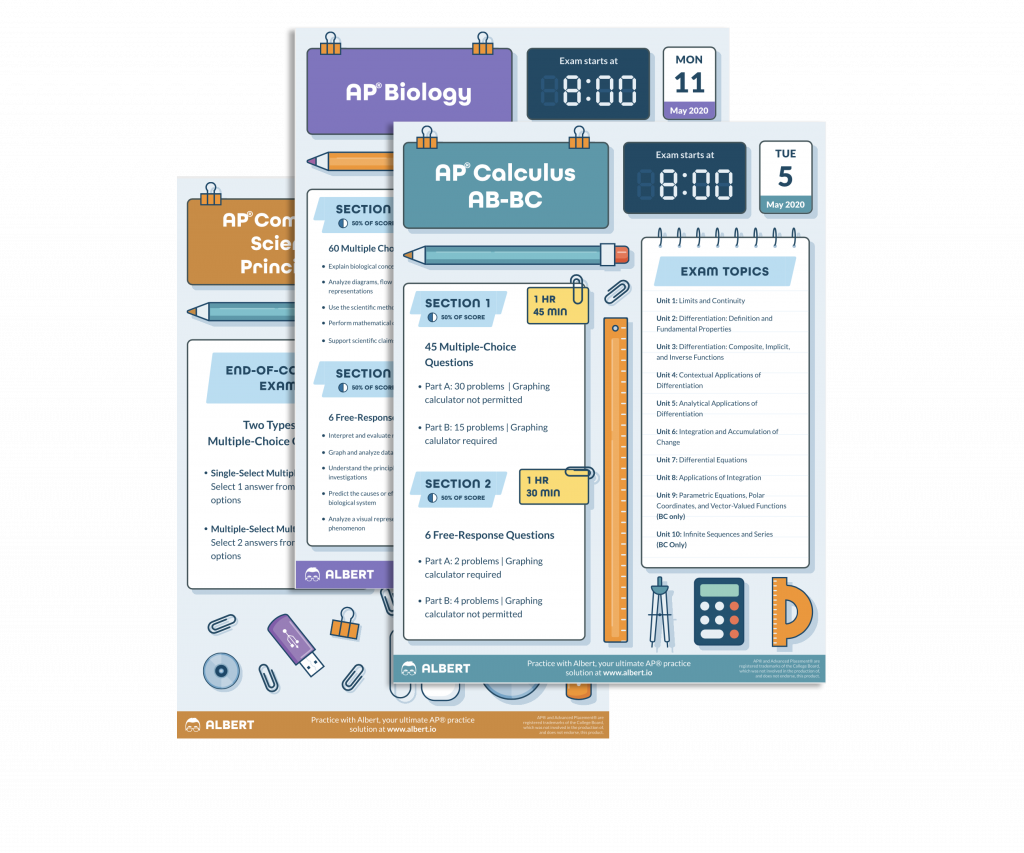The Progressive Era is exactly what it sounds like – a time of progression and reform in the United States. But do you know what the Progressives wanted to change? Do you know the impact of those changes? The AP® US History exam has had a lot of questions on the Progressive Era, so this crash course will prepare you for any that come your way!
The Progressive Era was a time of change on the national and state levels between 1900 and 1920. The Progressives who sought such change were women, the middle-class, and people who lived in urban areas. (It’s important to note that Progressives were NOT the same as the Populists, who were famers from the West and Midwest).
In around the 1880s, large companies needed to cut their costs, and in order to do that, they had to lower wages and increase employee hours. By the beginning of the 1900s, people began to feel that these companies were too powerful. The Progressive Era was born out of that feeling.
The general goals of the Progressives were improving social problems, reforming local governments, improving labor conditions, democratizing the political process, and regulating big business. They believed in cooperation to improve society.
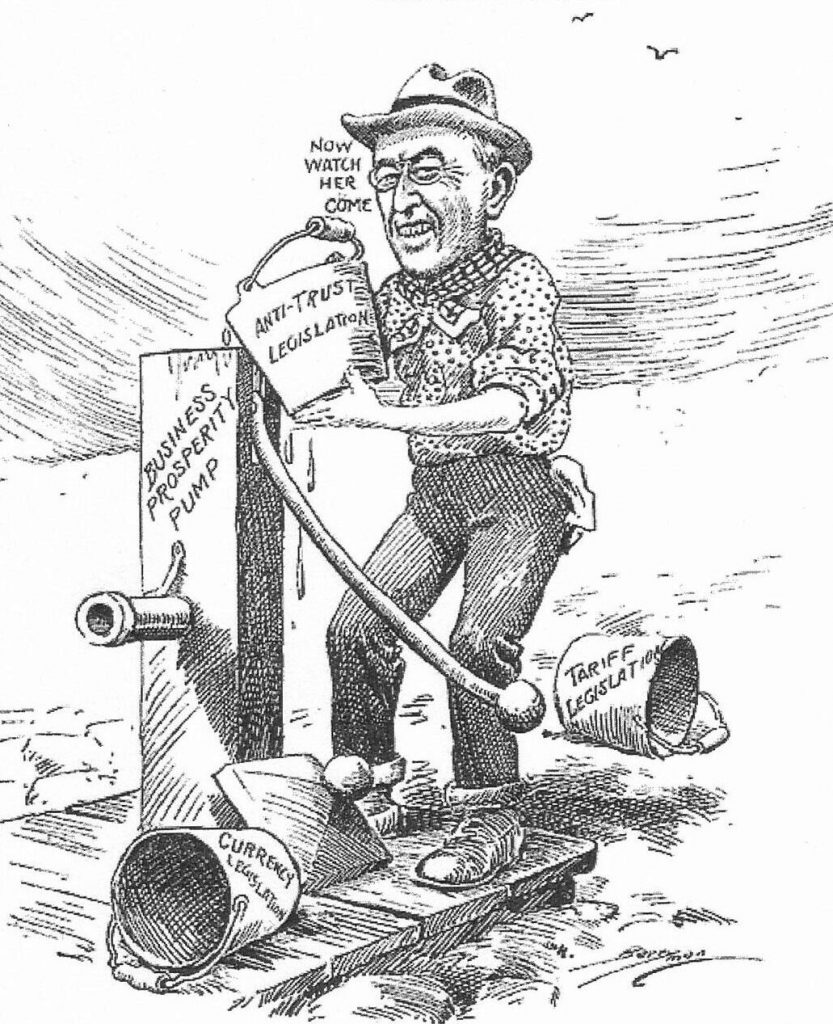
The Progressive Presidents
Theodore Roosevelt, 1901 – 1909
An easy way to remember Roosevelt’s political program, which he called “the Square Deal,” is to know that it consisted of the “three C’s:” consumer protections, corporate regulation, and conservation of natural resources.
Consumer protections – Heavily influenced by muckraking, and in particular Upton Sinclair’s The Jungle, Roosevelt focused on making sure the American people (the consumers) were protected. The Pure Food and Drug Act and the Meat Inspection Act were passed under Roosevelt.
Corporate regulation – Roosevelt wanted to control trusts, and actually became known as the “trust buster,” even though he didn’t want to completely get rid of trusts altogether. He wanted to regulate good trusts, and eliminate the bad ones. A good example you should know about is the 1902 Anthracite Coal Strike. Roosevelt actually sided against the owners of the mine and threatened to seize mines if the owners didn’t cooperate.
Conservation of natural resources – Roosevelt also focused on the environment. A perfect example of this is the Newlands Reclamation Act, which used money from the sale of lands out west to use towards irrigation projects in other parts of the country.
William Howard Taft, 1909 – 1913
Taft was the real “trust buster.” He wanted to break up any and all trusts, regardless of whether they were good or not. Roosevelt had picked Taft to be his successor, but when Taft became president, the two had a falling out due to Taft’s “trust busting” antics. In the next election, Roosevelt actually ran against Taft under his own Progressive Party, the Bull Moose Party, but lost.
Woodrow Wilson, 1913 – 1921
Under his New Freedom platform, Wilson wanted to eradicate trusts and lower tariffs. He wanted to stop big business from dominating the government by encouraging small business. He also established the Federal Reserve Act.
For the test: Focus your studying on Roosevelt and Wilson. There have been very few questions about Taft on the APUSH exam.
Muckraking
At around this time, the mass circulation of magazines and newspapers was just starting. People in California could read about something happening in New York, and vice versa, which was something that hadn’t really been easy to do before. Taking advantage of this new form of widespread communication were the “muckrakers,” a group of investigative journalists who exposed industrial and political abuse happening across the country.
For the AP® US History exam, it’s important to know about a few key muckrakers and their works:
The Jungle by Upton Sinclair was a novel that revealed the gruesome truths behind Chicago’s meatpacking industry. This book actually directly led to the Pure Food and Drugs Act and the Meat Inspection Act of 1906.
How the Other Half Lives by Jacob Riis was a series of shocking photographs that publicized the poor living conditions of immigrants in New York City.
The History of the Standard Oil Company by Ida Tarbell was an expose of the Standard Oil Company’s harsh treatment of other businesses.
For the test: Make sure you know these “muckrakers” and what their works were about. More importantly, understand the influence they had on the American people and the US government.
African Americans
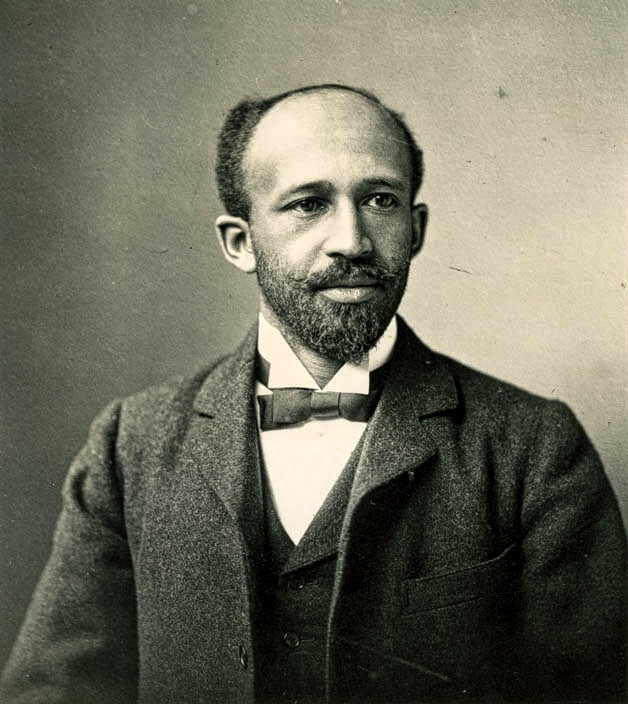
For the most part, African Americans were left out of government reforms during the Progressive Era. Keep in mind that the Progressives did NOT have goals of fighting for civil rights. Still, there are a few things you should know about African Americans during the Progressive Era for the AP® US History exam.
First, you need to know about a key African American figure, W.E.B. Du Bois. A Harvard PhD graduate, Du Bois demanded an immediate end to segregation. He opposed Booker T. Washington’s idea of black separatism and believed that Whites and Blacks needed to work together to achieve full equality. He also founded the NAACP in 1909.
You should also know about Ida B. Wells-Barnett, a Black civil rights advocate who championed an end to lynching.
For the test: Know the differences between W.E.B. Du Bois’ approach to equality versus Booker T. Washington’s’. Also, remember that the Progressives did not seek an end to racial discrimination and nothing much was achieved during this time for the rights of African Americans.
Women
Women made great strides during the Progressive Era in several areas of reform. Jane Addams founded the Hull House in Chicago, which helped women, children, and immigrants by teaching literacy classes, creating daycare centers for working mothers, and publishing expose reports. Florence Kelley was the leader of the National Consumer League, which successfully boycotted goods made by children to help pass child labor legislation. Dorothea Dix lobbied on behalf of mentally ill American to get them out of appalling conditions in prisons and into safe asylums.
For the test: Know the key Progressive Era women and what they fought for. Also know that women fought for issues that men often overlooked.
Key Amendments
Four important amendments were passed during the Progressive Era:
The 16th Amendment is the graduated income tax, meaning the higher your income, the more tax you pay. This, of course, gave more money to the government but also helped decrease the poor–rich divide.
The 17th Amendment is the direct election of senators. Before, they were elected by state legislatures so this amendment increased the political power of the citizens of a state.
The 18th Amendment is prohibition, or the illegalization of alcohol. This amendment was heavily influenced by the Women’s Christian Temperance Union. It was seen as a Progressive failure because it increased organized crime.
The 19th Amendment is women’s suffrage. Women were finally given the right to vote, although they were still not treated as equals to men.
For the test: Know what each of these amendments is, but more importantly, be able to identify the impact they had on the nation.
The Progressive Era on the APUSH Exam
As an AP® US History student, you need to know all the facts, but you also have to make determinations based on those facts. To put it simply, you have to focus on the impact and the cause and effects of certain events in history. For the Progressive Era, you have to know the ways in which it was effective and the ways in which it was ineffective. Let’s take a look at that right now.
The Progressive Era was effective because it was a time of reformation. Child labor laws made it illegal for under 16’s to work for interstate commerce. Women’s labor laws reduced the number of hours women had to work. Additionally, a very important impact of the Progressive Era is that it greatly increased participation in politics. There were now direct primary elections, initiatives, referendums, and recalls.
Unfortunately, the Progressive Era wasn’t effective in other areas. There was no civil rights reform. Immigrants and African Americans were discouraged from voting because of poll taxes and literacy tests, meaning that a large portion of the population couldn’t vote. Prohibition raised crime levels and was actually repealed 13 years later. Also, the 19th Amendment passed in 1919, meaning during the majority of the Progressive Era, women could not vote.
By the way, you should check out Albert.io for your AP® US History review. We have hundreds of APUSH practice questions written just for you!

